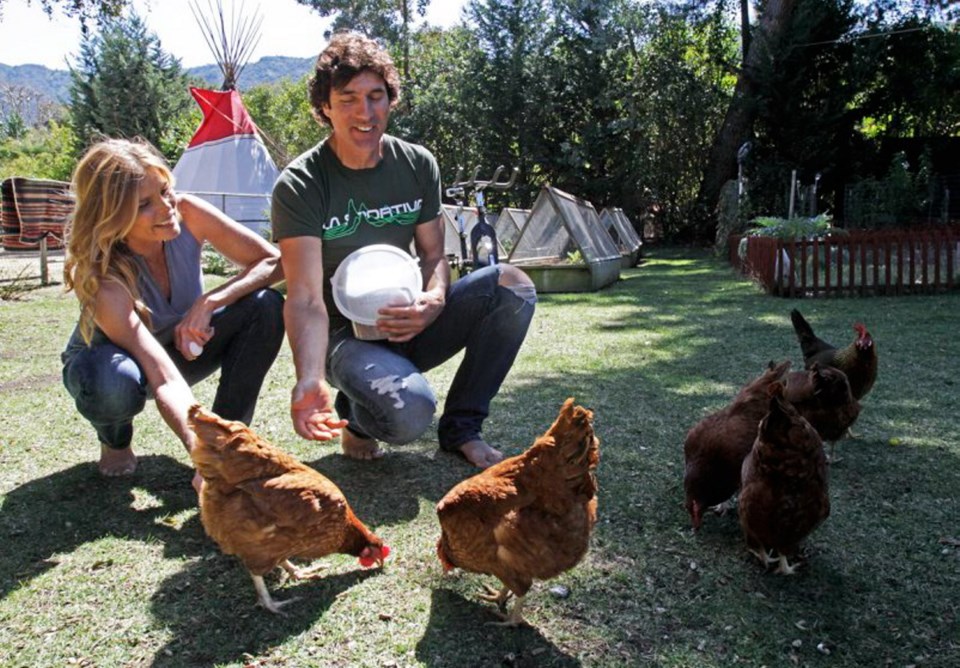LOS ANGELES — Mariel Hemingway, makeup-free and in sweats, is gorgeous. That bone structure, her cheetah-like build and flowing hair have been familiar for decades. What’s disarming is her forthright approach to a rough family history and her determination to live the happy and healthy life that eluded so many of her relatives.
She knows a lot, she says, about what it takes to live a happy life — no matter your cheekbones or pedigree. Perhaps it’s because she’s seen enough unhappiness to last many lifetimes: for starters, the suicides of her supermodel sister and her legendary grandfather, as well as five other relatives. And there’s the depression she endured for many years.
With a new documentary film, Running From Crazy, and a book, The WillingWay, written with her business and romantic partner, Bobby Williams, she hopes to inspire other people to find their best lives.
Williams, 50, and Hemingway, 51 and perhaps best known for her Oscar-nominated performance in Manhattan, try to practice what they preach at WillingWay Ranch, not far from Pepperdine University in Malibu. It’s their home and their laboratory.
There are animals: 11 Rhode Island red chickens (the couple trades the eggs at the farmers market); two dogs, the obvious masters of their universe; and several dozen hummingbirds that flit among three porch feeders and a chubby bush below.
The stone-fronted house is modest, just 1,100 square feet, and full of books, Buddha statues, iron teapots and a big white L-shaped couch. Outside, a luxuriously big wraparound porch has two sitting areas, a barbecue and a fireplace.
There are rock-climbing holds on the ceiling, so Williams can Spider-Man his way around. Those are just the tip of the athletic iceberg at the WillingWay Ranch, a veritable playground of pingpong, footballs, bikes, kettle bells, a rope ladder, climbing wall, weights, a basketball hoop, two slack lines, swimming pool, trampoline and a Wiffle-ball diamond where former owners kept horses.
Then there’s the two-story red-and-white tepee that was Hemingway’s 51st birthday gift last fall. Inside, rugs and pillows ring a rock fire pit — one of life’s simple but powerful pleasures, Hemingway says.
When the fire is strong, “guys get their egos on, one-upping each other in their stories,” Williams says. “As the fire dies down, everyone gets quiet. Heads are going on laps. No one is making fun of each other.”
On a walk around the yard, the partners are chatty and warm. Williams starts climbing the rope ladder, his strength from years as a stuntman obvious. Hemingway follows, her big, strong hands and muscled arms enabling a nimble climb.
Everything at the ranch supports their view that simple things make them healthier and happier, that happiness is basic, even though “everything in our world says it has to be complicated,” Hemingway says.
Anyone might conclude, “Of course they’re happy. They’re beautiful, affluent, smart.” They readily acknowledge their blessings, especially the chance to turn what they love into their work promoting physical and mental health.
That wasn’t always the case. Hemingway, the youngest of three girls born to Jack Hemingway, son of writer Ernest Hemingway and his first wife, Hadley Richardson, spent a lifetime looking “shiny and happy for everyone,” she says. And that wasn’t easy: Her parents’ nightly “wine time” often devolved into fights, she says. One older sister lives with schizophrenia and sister Margaux died of an overdose.
She looked everywhere for a solution to her depression — “until the ripe old age of 47, when I realized the answer is in me.”



